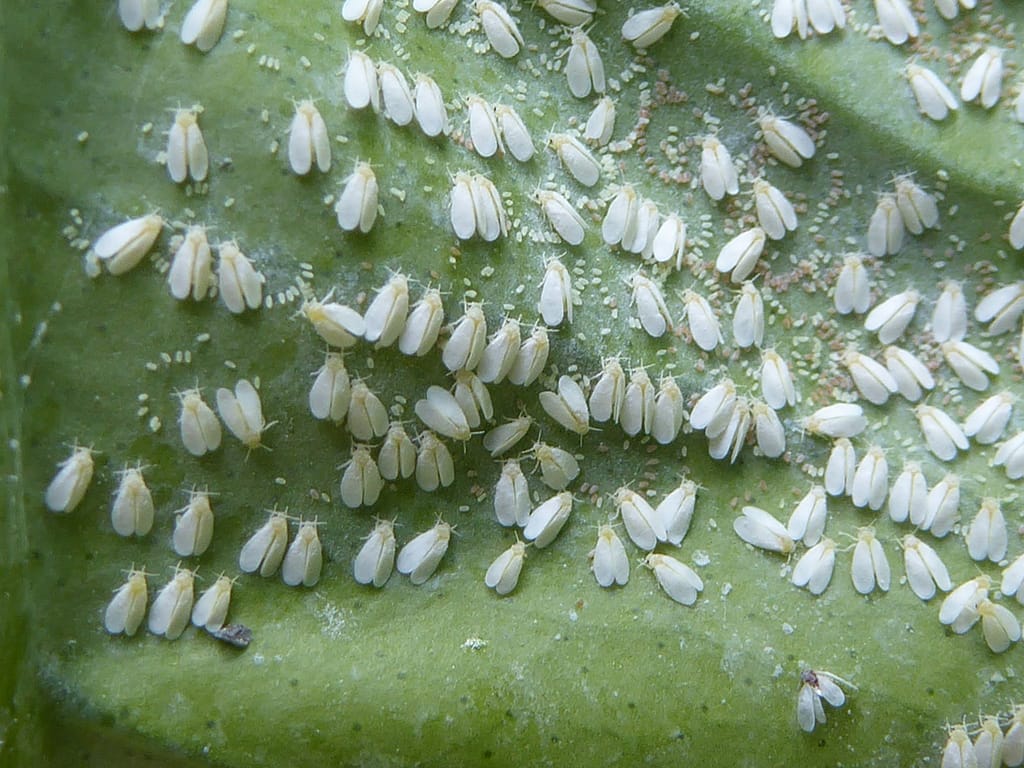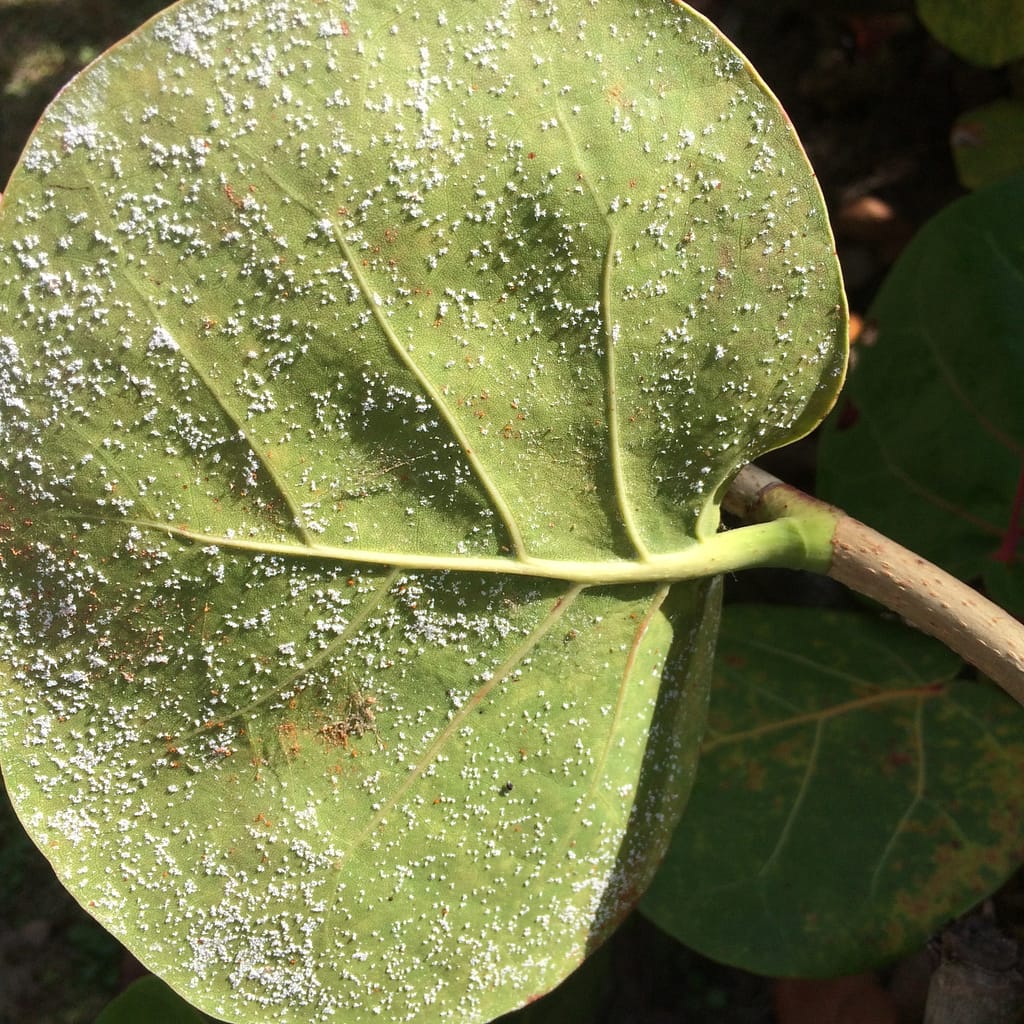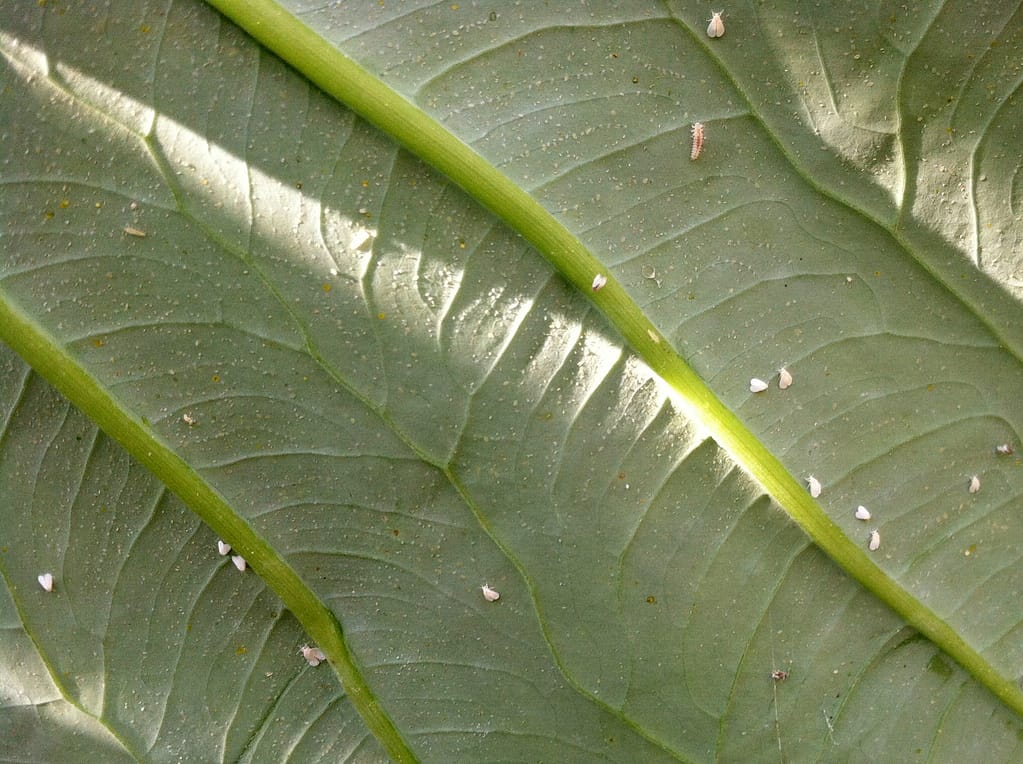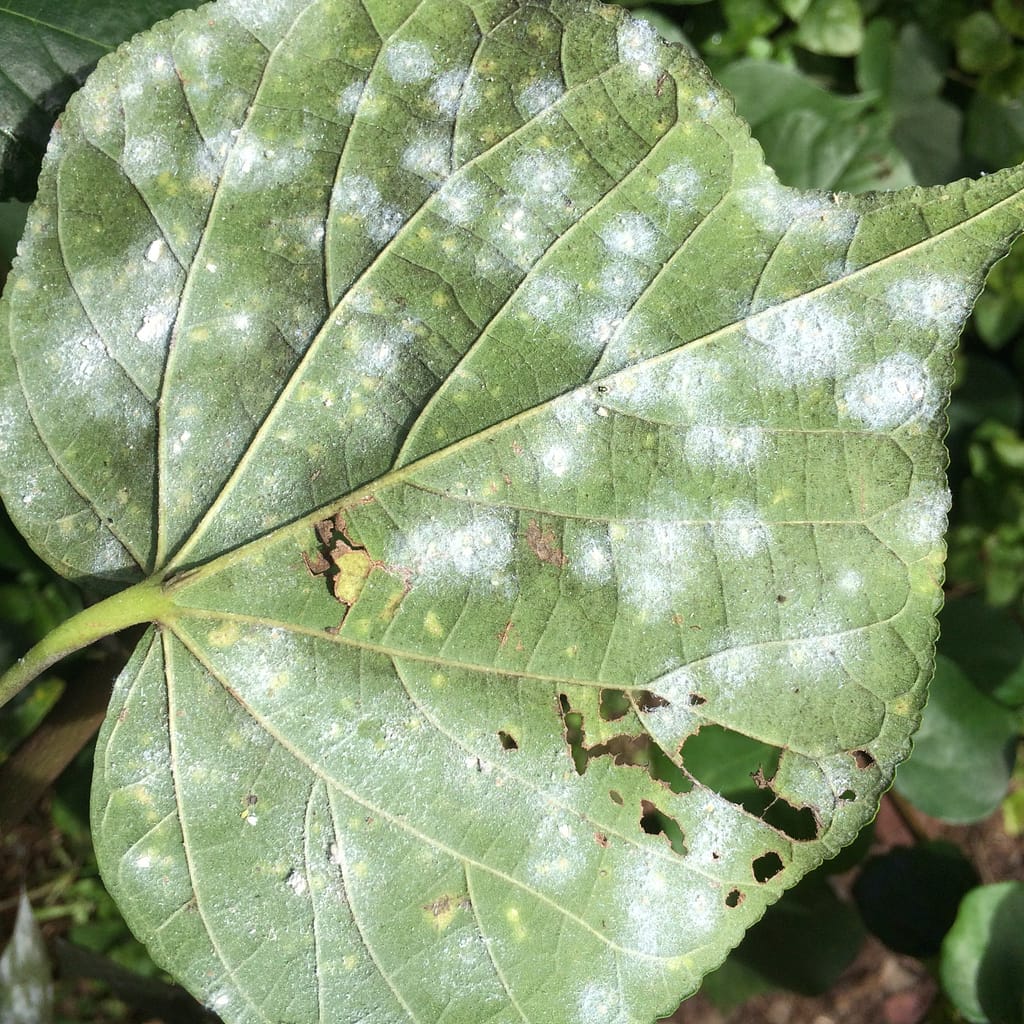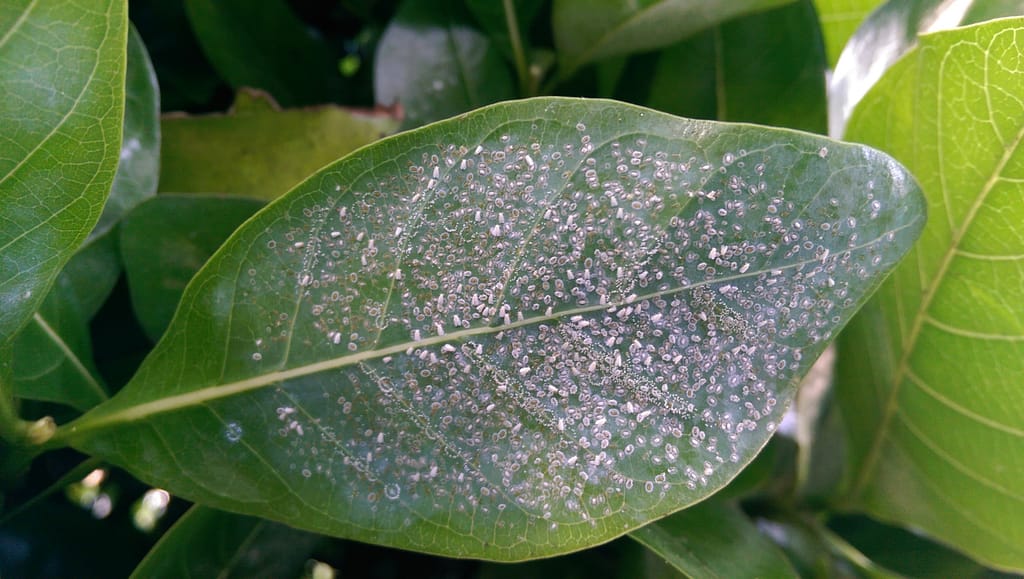What Are Whiteflies?
Whiteflies are winged insects that feed on the foliage of plants. They then excrete honeydew and get protected by ants as they feed on the honeydew. Whiteflies can get out of control in warm weather seasons and are difficult to control when natural biological controls are disrupted.
Symptoms and Identification of Whiteflies
One of the best resources for whitefly identification is this compilation of insect photos that have a search function to help identify them: https://www.forestryimages.org/browse/Archivethumb.cfm?Arc=4
Nymphs are inconspicuous, but adults will fly away if the plant is disturbed and quickly re-land
Symptoms of whiteflies include the following:
- Honeydew or Sooty Mold
- Tiny nymphs on the underside of leaves
- Yellowing, stippling, silvering, distortion of foliage, or drying leaves
- Wilting or stunted plant growth
- Deposits of white wax with some species of whitefly
For images of plants with whiteflies scroll to the bottom for help in identifying if it is affecting your plant. If you have photos you’d like to add to the photos below you can send them to [email protected].
Life Cycle
Eggs are laid on newest leaves. Recently hatched nymphs find a desirable location to feed and fasten on to that location. They feed there until they reach adulthood. Adults and nymphs both piece foliage and feed then excrete honeydew. Some species can reproduce year round in warmer parts of Southern California. In colder regions they cannot survive the cold winters and are reintroduced by infested plants that get planted the following season.
Management of Whiteflies
Biological Control
Whiteflies can generally be effectively managed through natural predators (parasitic wasps, various beetles, lacewings, mites, and ladybugs) if you don’t have a heavy infestation. Outbreaks typically happen when the natural predators are inhibited from chemical sprays, ants, or dusty conditions. The best way of controlling whiteflies is managing them before the infestation becomes too much to handle with cultural or biological control methods.
Cultural Control
Before populations get out of control, vigilant removal of infested leaves and hosing down of the plant with water can keep the pests in control. Reflective mulches can help with vegetable gardens (though I don’t typically recommend we use those here where we reach 105°F+ in the summers). Yellow sticky traps are another way of controlling and monitoring the whitefly population.
Removal and destruction of any heavily infested plants after harvest is key to prevent future problems.
If you have whitefly infestations in your greenhouse, removal of all plants for 2 weeks can eliminate the issue assuming that whiteflies can not enter from the outside.
Chemical Control
Insecticidal soaps or oils can be used to help control the population, but they are not made to eliminate all of the population. It will require several thorough applications over a few weeks to attain a significant population decrease.
Systemic insecticides are available as well, but they have negative effects on pollinators and natural predators (which can exacerbate other pest problems). I’d recommend not using any insecticides that contain carbaryl, pyrethroids, or imidacloprid, as they can make the problem worse in the long term.
Toxicity
As with almost all chemicals there is an associated toxicity rating for the active ingredients of different pesticides, fungicides, herbicides, and rodenticides. Here are a few places you can learn more about their toxicity with a table of their rating and what the rating means (first is the preferred):
http://pods.dasnr.okstate.edu/docushare/dsweb/Get/Document-3591/EPP-7457web.pdf
https://extension.psu.edu/toxicity-of-pesticides

